Ancient Psychedelia: Alien Gods & Mushroom Goddesses
Online Book - Chapter 19, Page 381
Back to Online Book Mainpage / Next Page (Chapter 19, Page 382)
The Chimu culture of Peru, c. 900-1400 AD, usually represented their connection to deity by placing the mushroom right above the head, which may lead to an obvious question of why they would decorate their heads with axe hats (78e, f). There are also cloth textiles with mushrooms in the hands of shamans (78i, j). The Chancay culture c. 1000-1470 AD, also created textiles with mushroom imagery, in line with well-known serpent symbolism. 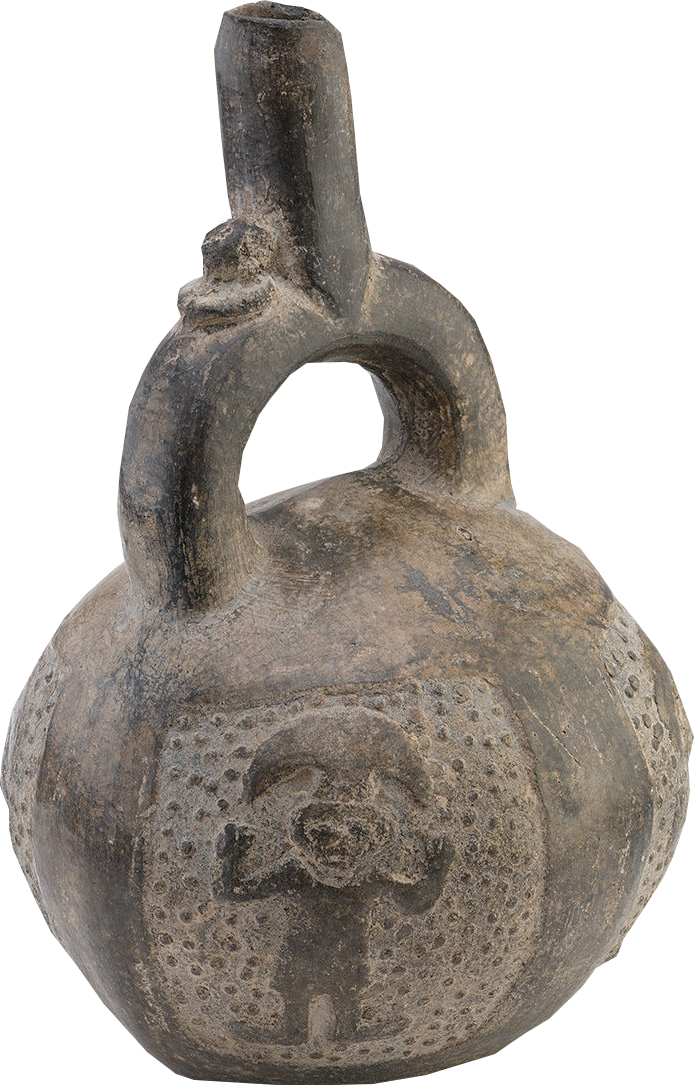 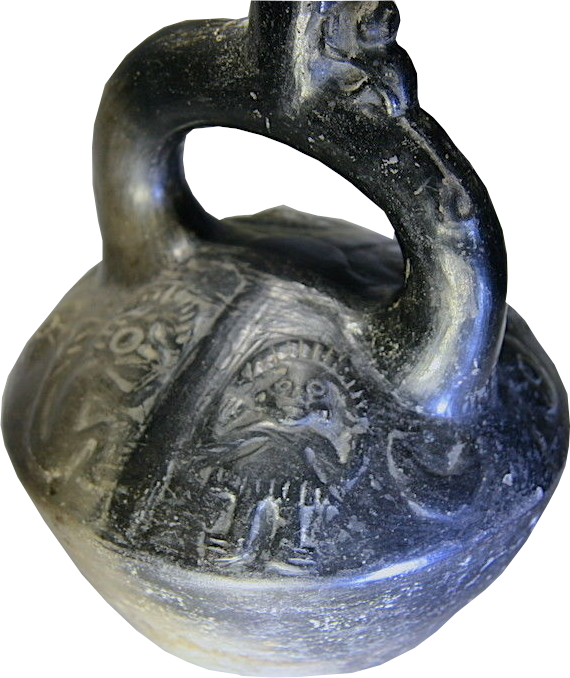 R: (78f) Chimu, Inca c. 900- 1400 AD 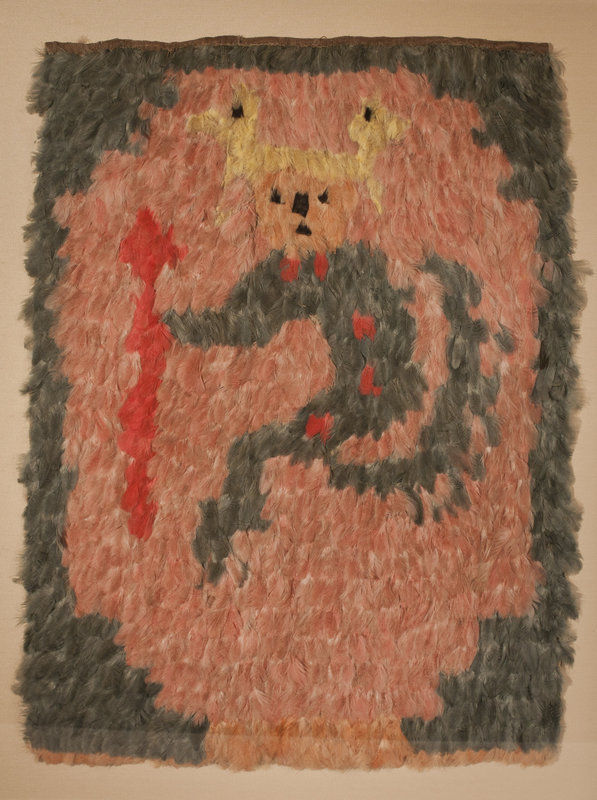 (78i) Chimu feather panel tabard c. 1200-1400 AD 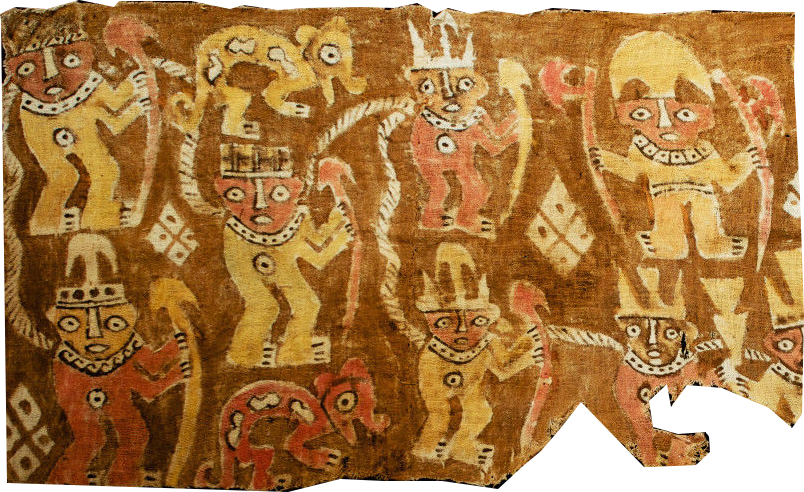 (78j) Chimu Textile c. 1000-1400 AD |
The Tairona culture which thrived from 200-1600 AD, made some very beautifully crafted pieces of mushroom art, many of which depict reptile deities with the mushroom shape above the head and also some smaller mushroom below at the base, sometimes in place of a skirt (78g).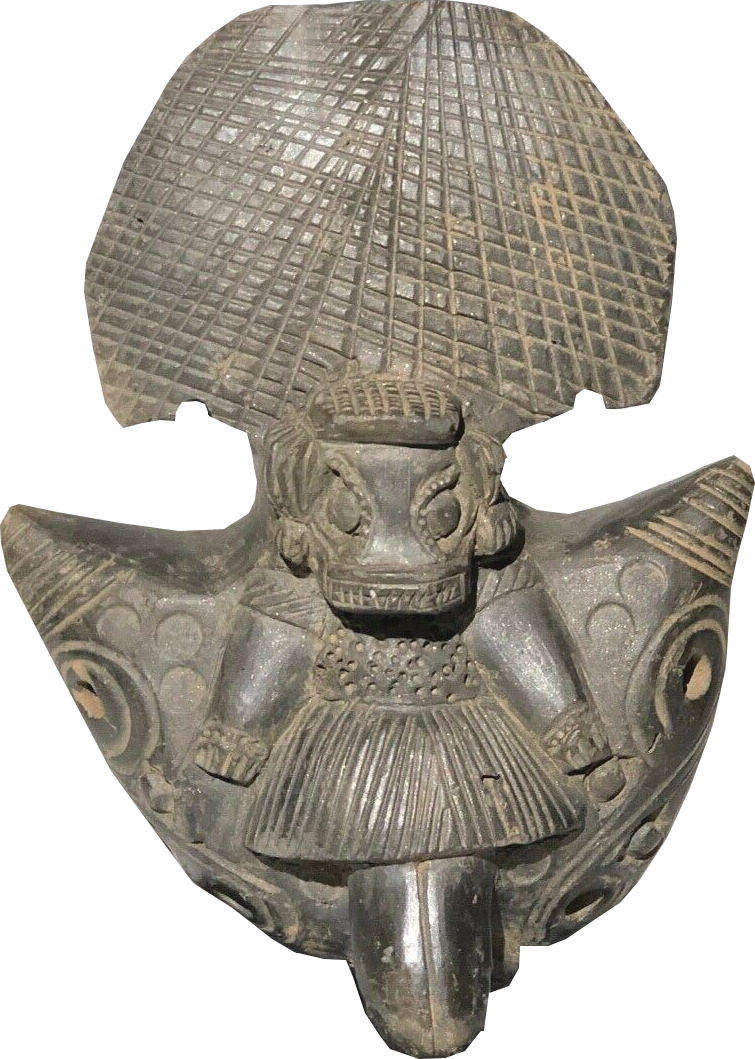 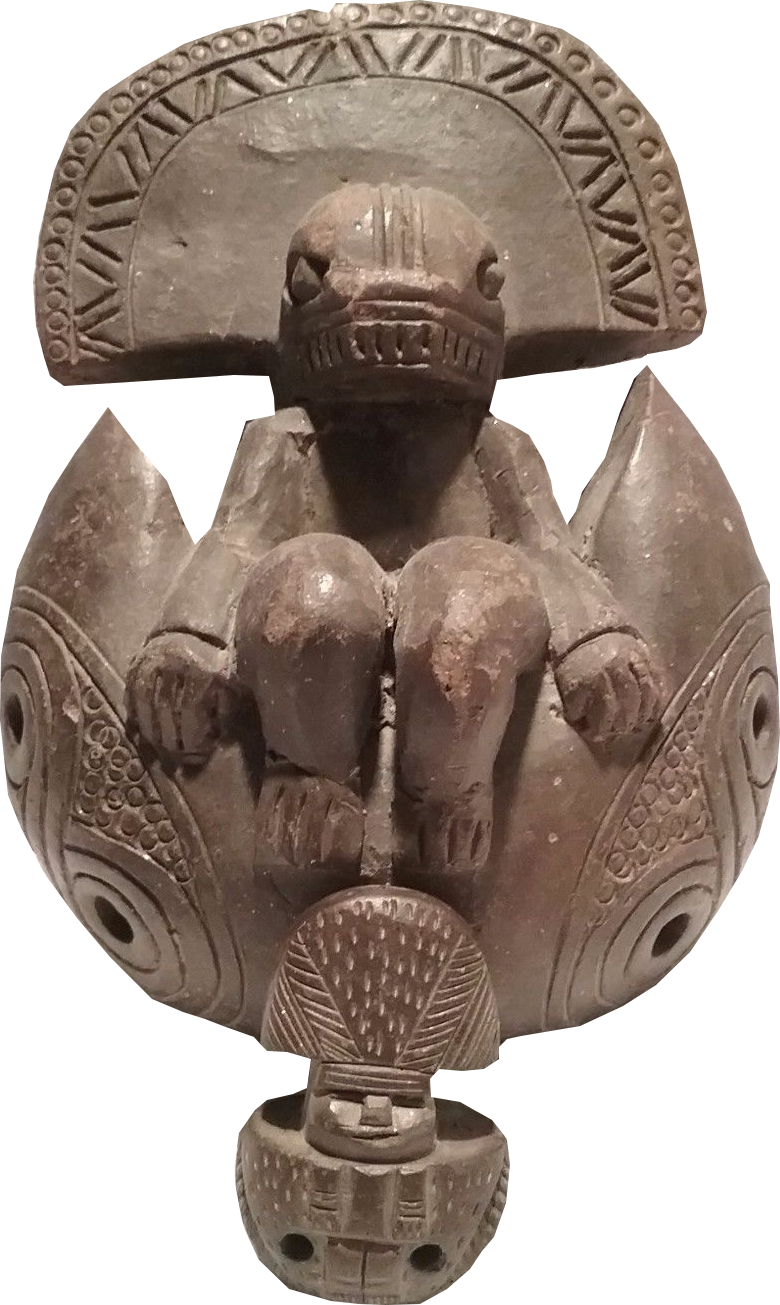 (78g) Tairona Culture c. 200-1600 AD Tairona art includes bird whistles shaped like mushrooms as well. These usually have a dotted ridge type ring around the bird’s neck, and the wings are pointed down, giving the whistle the look of either a bird or a mushroom depending on which direction it’s viewed from (78k). This is one of the more artistic ways of occulting the mushroom, no doubt. 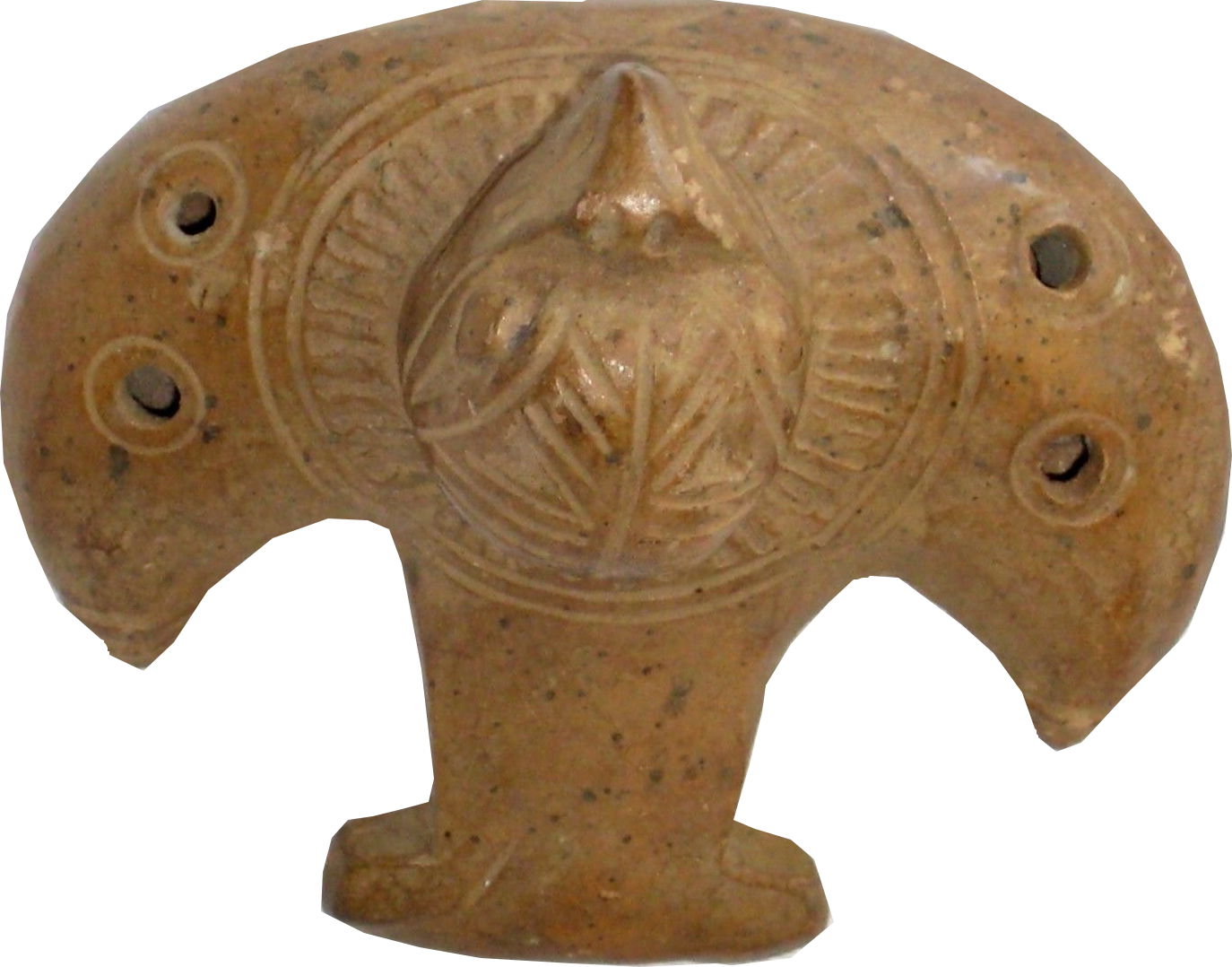 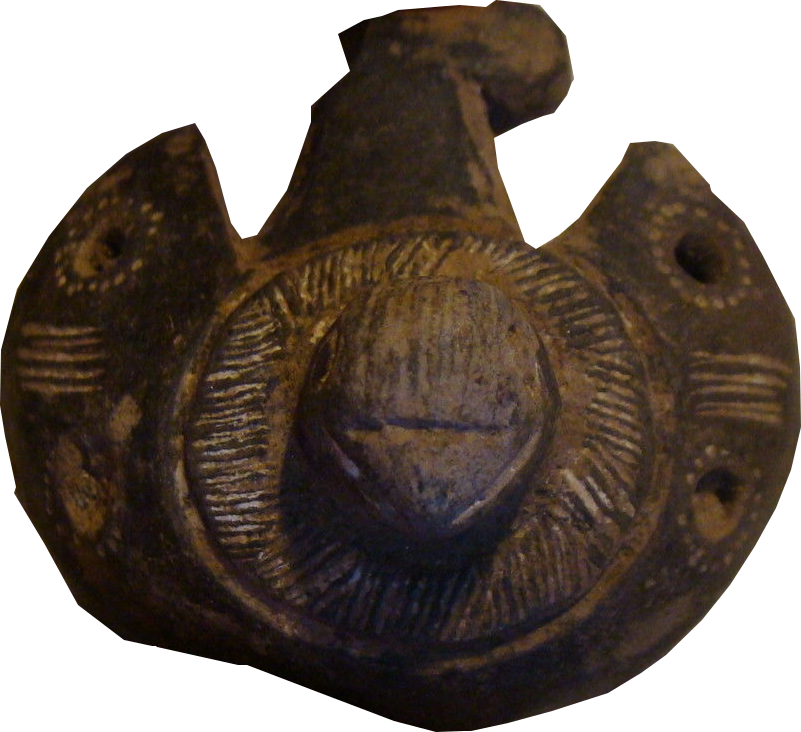 (78k) Musical Instrument / Whistle c. 500-700 AD The pottery from the Tairona culture resembles mushrooms as well, where we see the dotted ridging along the rim (77d). 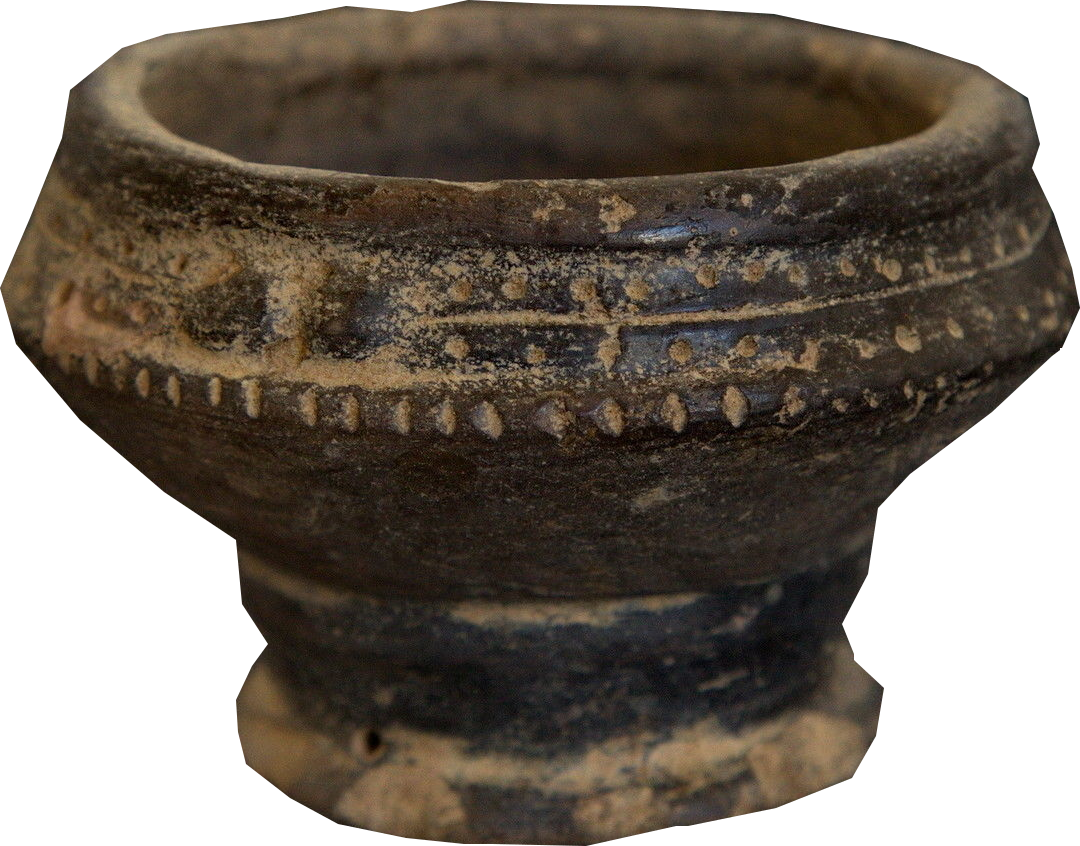 (77d) Tairona Colombia c. 200-1600 AD |
Go Back to Page 380